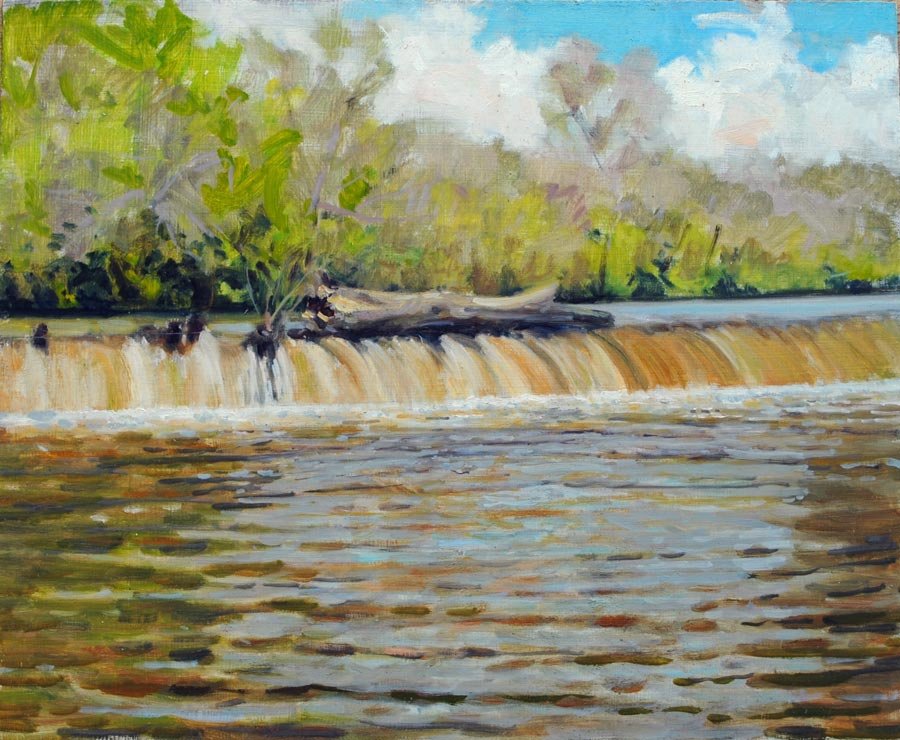
Artist Richard Crozier’s works are subjects of change…change of seasons, change of light, change of landscape and skyline. Over the past four decades, he has produced more than 3000 “portraits” of the Charlottesville area in transition. In 2011, Crozier retired as professor of studio art from UVa’s McIntire Department of Art, where since 1974, he’d taught beginning drawing and advanced painting and became known for his encouraging and engaging style. He continues to paint daily, producing up to five scenes a week. “The thing that interests me a lot are landscapes that are in the process of changing from one thing to another,” says Crozier. “Something’s being torn down and you think, ‘The view’s opening up. You won’t see that again once they build something new.’ The chaos, the kind of random quality of the juxtaposition when things have being taken down or built up. In the winter, you see the snow and think, ‘This is not going to stick around. It’s going to look different in a week or two’. That’s interesting to me.
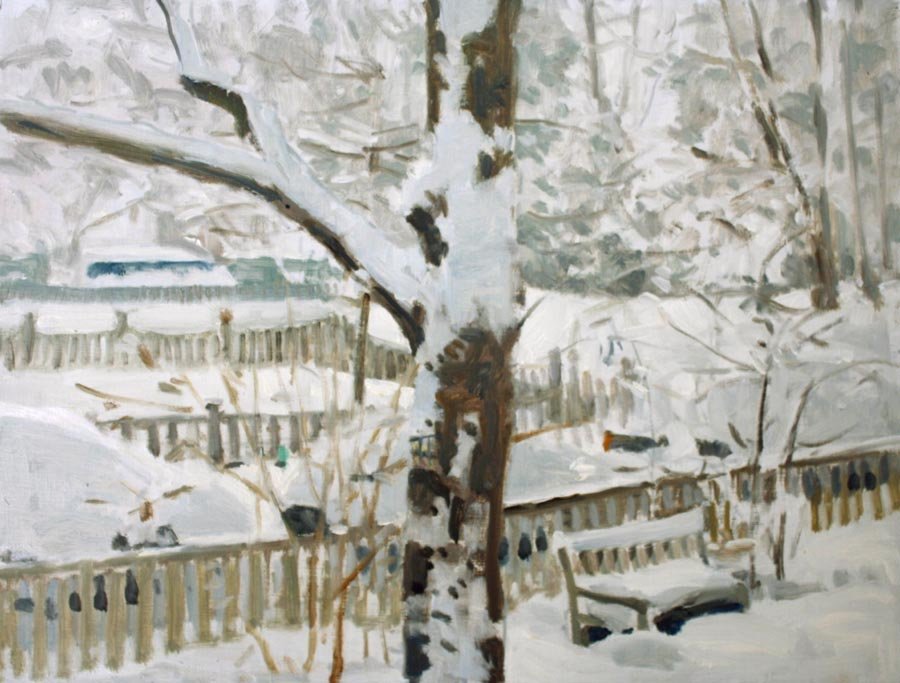
“There’s a lumberyard in Crozet, a big complex of buildings that are abandoned and falling apart. I’m assuming that they are going to come down pretty quickly. That’s something I think is pretty cool that I’d like to paint. Recently, we were coming through Waynesboro where one of the big Dupont industrial buildings was being taken down. A lot of stuff was hanging out of it. I went back and painted a couple of pictures. A week later, I went back and everything was gone.”
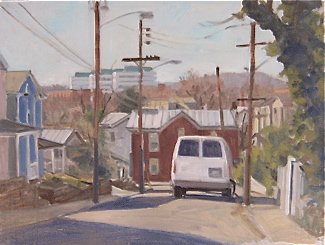
Crozier cruises the city and surrounding countryside looking for subjects in his 2003 blue VW, a mini studio on wheels complete with paints, brushes, heat and air conditioning. Painting from the driver’s seat on the spot—en plein air—he’s pleased to have “gotten,” a construction site or landscape on canvas before it disappears. “I try to get something down as quickly as I can…maybe in an hour, hour and a half or two hours. They’re kind of scrubby…I sketch it in with a brush and can erase it with turpentine.” Favoring an abstract approach, Crozier seeks “sculptural shapes” and images as well as a linear, frontal perspective to divide the space and create horizons. “I’m looking for things that give a repeated shape. I think of a house or a truck or a car as objects and choose them to trying make a picture that has a compositional sense about it.”
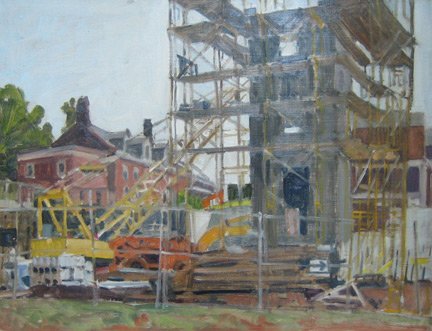
While Crozier paints most of his city and landscapes at a polite distance, he moves in close for the flowers and greenery of his lush garden. “I’m not a really patient painter in that I don’t sit down and figure out how to get all those leaves just right. I try to look at them as a mass of stuff and get the texture that seems to work. If I get too far back, they turn into a pile of green oatmeal. I have to get close enough to see some kind of structure…structure more than color, shapes and directional things, textures.”
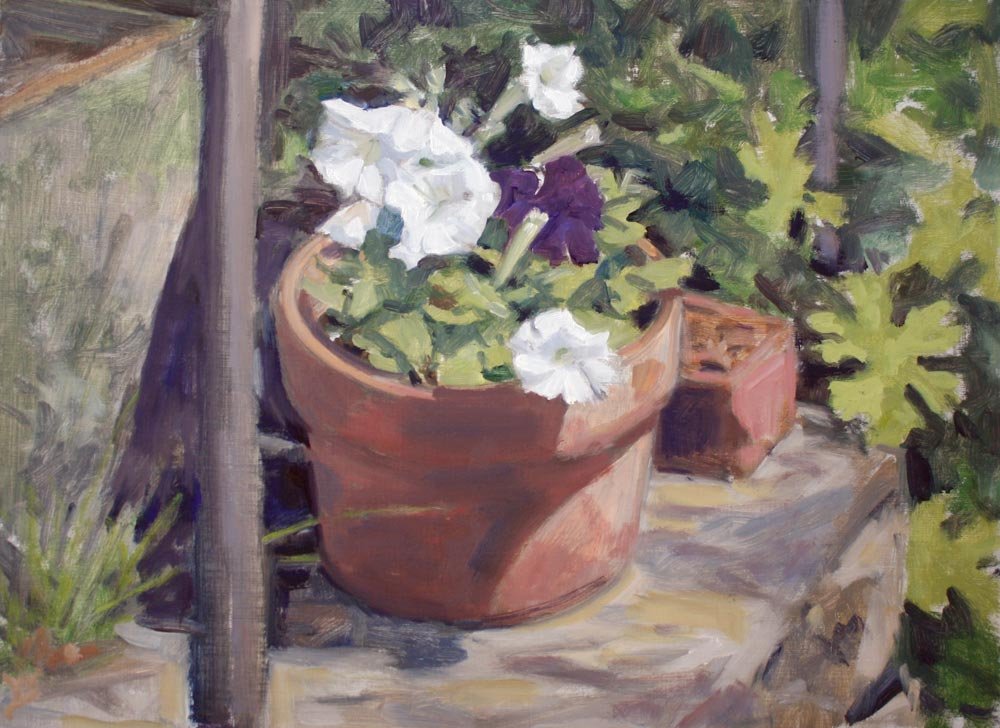

Born in Honolulu, Hawaii, Crozier is the son of an Idaho farmer who moved to the islands during the Depression. His parents thought their second son might have an aptitude for science and should consider becoming a dentist. Instead, Crozier earned his BFA from the University of Washington, Seattle. He studied graphic design but found painting and drawing more to his liking. “I’d pick up my paints, walk outside and just paint. I’d come back and see what I could do with it.” He later earned his MFA in painting from the University of California, Davis, studying with Wayne Thiebaud, a contemporary painter noted for depicting everyday objects—pies, lipsticks and paint cans among them.
Crozier was also inspired by the subjects and muted palettes of various landscape artists. “Just about anybody who painted out of doors was interesting to me…back to Constable and Corot, the Barbizon painters and most of the Impressionists. Pissaro. Sisley. I looked at a lot of Edward Hopper when I was a grad student. He had a lot of geometry in his work. I like Vuillard’s paintings…a lot of greys. Albert Marquet did some really quite wonderful landscape painting…very subdued and atmospheric.” He admires British realist Rackstraw Downs for his oversized panoramas of Texas and New York City.
A praised and prolific painter himself, Crozier’s work has been widely exhibited with solo shows in California, Texas, New York, Washington, D.C. and throughout Virginia. He’s working towards a one man retrospective in January at Sweet Briar College. “Richard Crozier’s devotion to painting has instilled in him an unerring sense of color and tone to capture the light and color variations of different regions of the American landscape,” said the director of the Pence Gallery in Davis, California. “By portraying the beauty of everyday places, complete with powerlines, factories, and other signs of modern life, Crozier shows us a world that is both familiar and newly seen.”
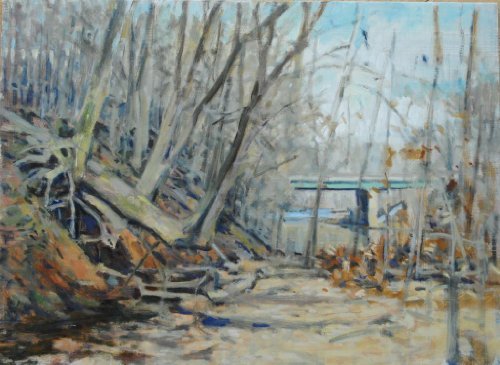
Along the way, Crozier’s familiar subjects and quick studies have made him an unofficial preservationist of local landmarks. “There’s not any formal project, it’s not a deliberate documentation, but just having made a lot of paintings over this time, there is a kind of sense of how the city has evolved. Charlottesville is growing up so fast.” Until retirement, Crozier often painted a picture a day. “I’m doing about the same amount of painting but I’m working on them a little longer,” he says. “I’ll go back out and look again. I’ll sit down and spend a couple of days on one of these little things rather than saying, ‘done.’ “Dealing with a more complicated scene is easier for me now. I break it down more. I’ll try to get as much as I can (in the scene) but after a little bit, I burn out and go home. It’s become a lot clearer that if something doesn’t work, I can just wipe it off and do it again. If I do that, I’ll get better. A lot of things I would have been very protective of in a painting, now I’ll just take it off. I think that’s progress.”
Crozier’s upcoming Sweet Briar show will further his themes of change and transition. He considers what to paint next, large and small. “I think there’s a painting I can do at the old Crozet lumberyard. I’m just not sure what it’s going to be yet… how the site sits in the landscape or maybe the mountains behind the footprints of old buildings that have been taken down… That’s the stuff that interests me.
“I also want to make some more paintings of The (recently closed) Tavern restaurant and The Carriage Food House. I don’t know what they’ll lead to…“ He paused. “Someone once remarked, ‘Art stops time.’ I thought, that’s interesting… Maybe it does.“
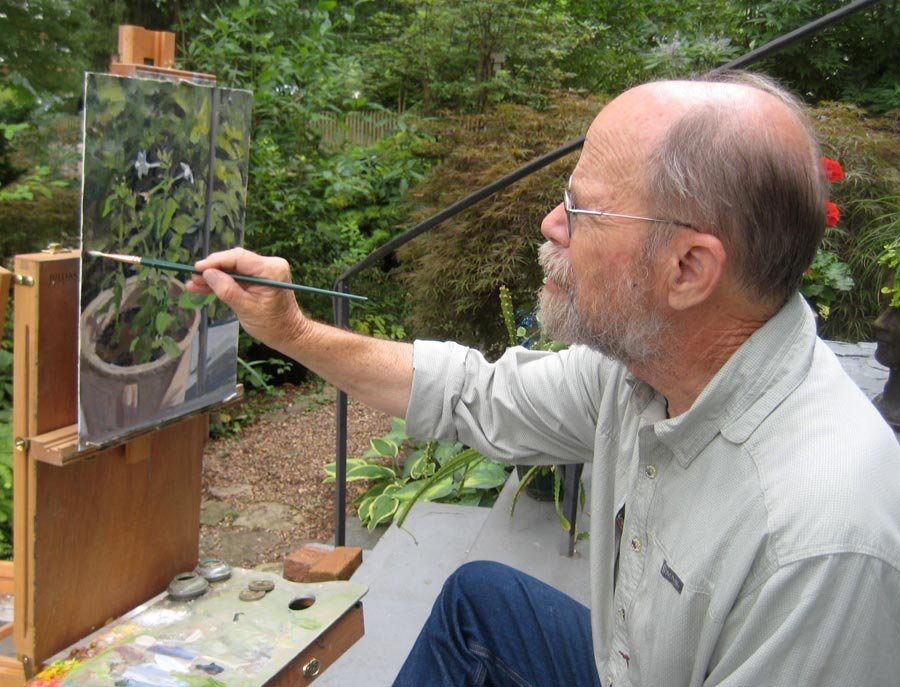
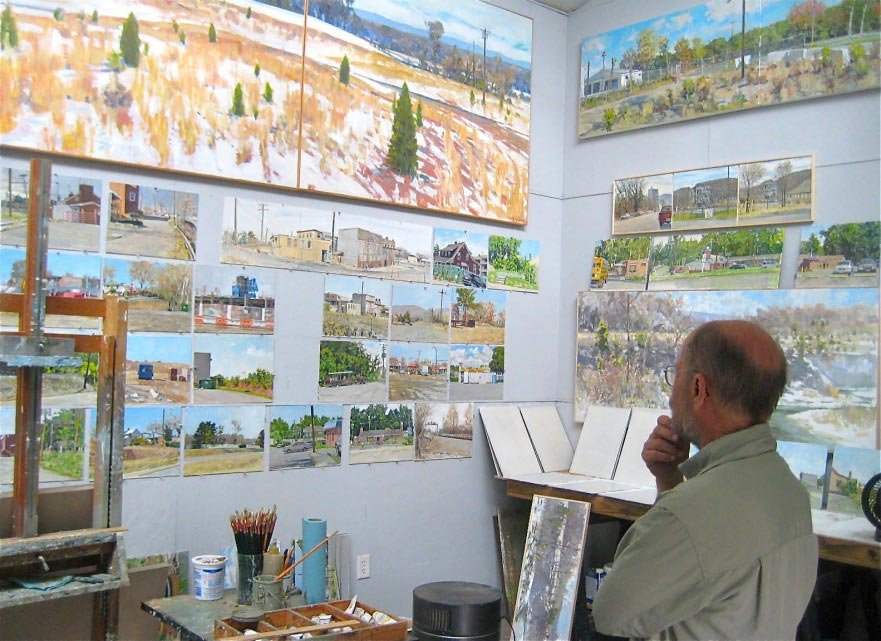
–Elizabeth Howard, Art Editor
Photos by Elizabeth Howard.
Share this post with your friends.

excellent article!! Thank you Elizabeth.